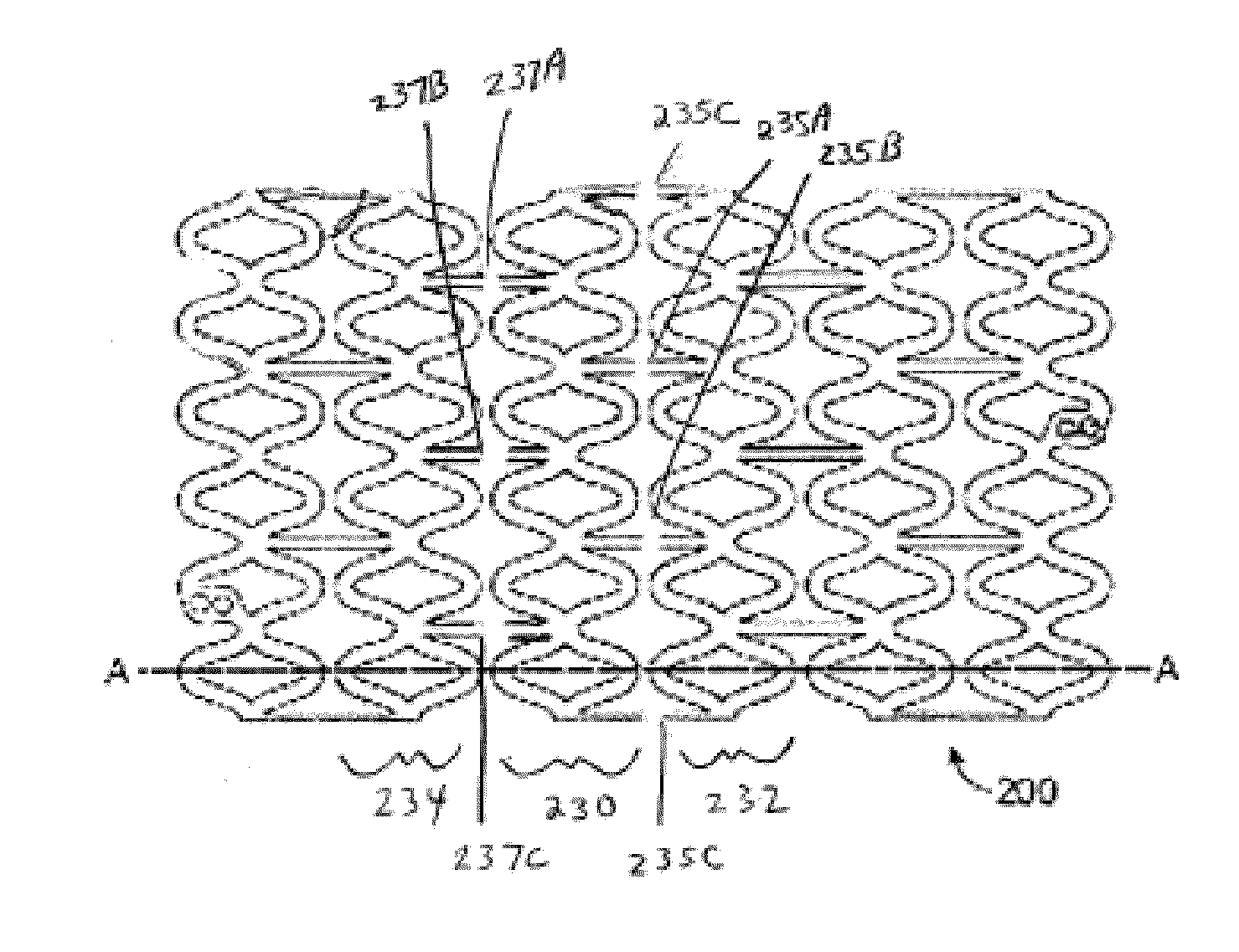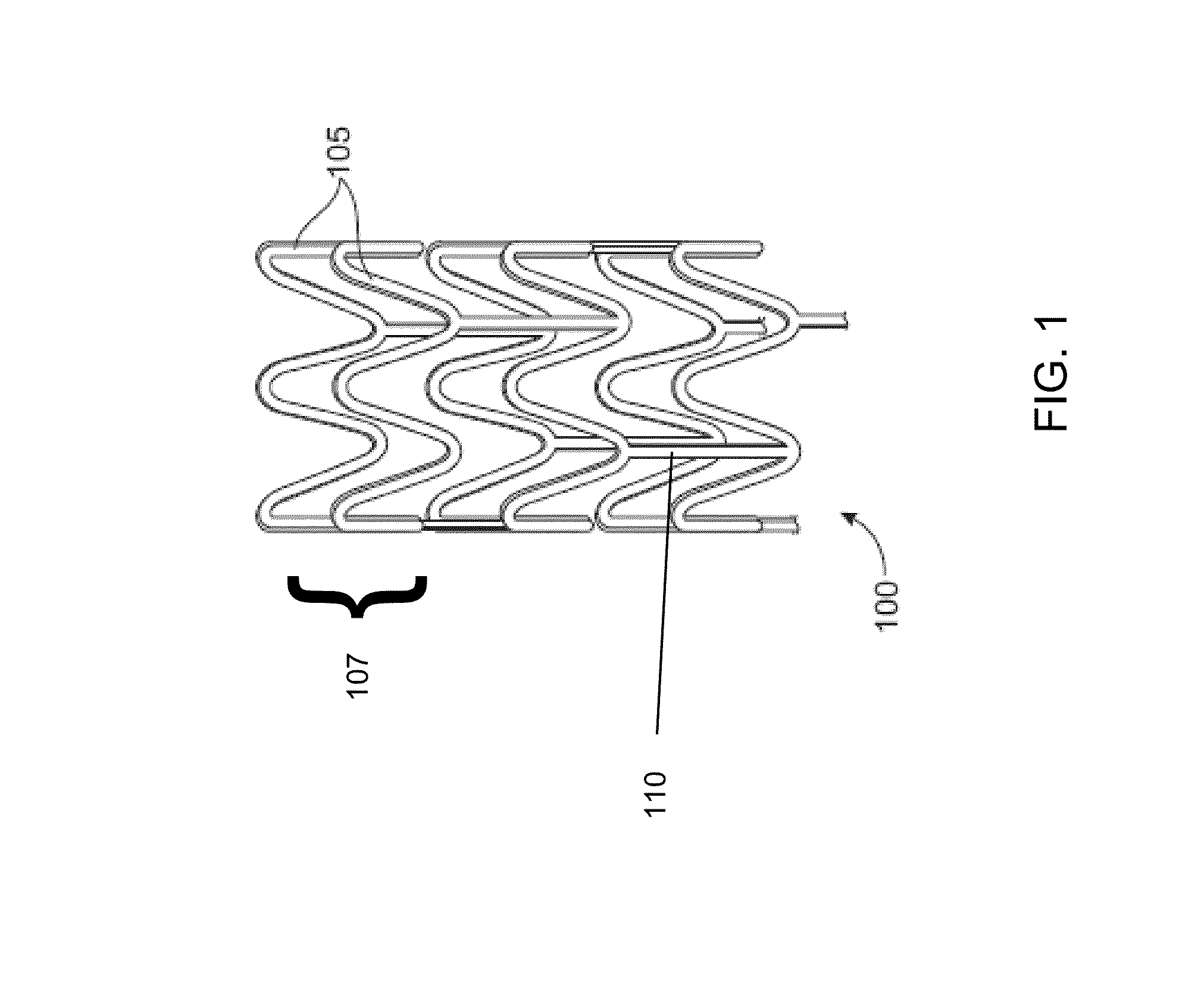Method of treatment with a bioabsorbable stent with time dependent structure and properties and regio-selective degradation
a bioabsorbable, time-dependent technology, applied in the field of stents, can solve the problems of difficult treatment, adverse or even toxic side effects, and significant problem of restenosis
- Summary
- Abstract
- Description
- Claims
- Application Information
AI Technical Summary
Benefits of technology
Problems solved by technology
Method used
Image
Examples
Embodiment Construction
[0032]Coronary arteries refer generally to arteries that branch off the aorta to supply the heart muscle with oxygenated blood. Peripheral arteries refer generally to blood vessels outside the heart and brain.
[0033]In both coronary artery disease and peripheral artery disease, the arteries become hardened and narrowed or stenotic and restrict blood flow. In the case of the coronary arteries, blood flow is restricted to the heart, while in the peripheral arteries blood flow is restricted leading to the kidneys, stomach, arms, legs and feet. The narrowing is caused by the buildup of cholesterol and other material, called plaque, on their inner walls of the vessel. Such narrowed or stenotic portions are often referred to as lesions. Artery disease also includes the reoccurrence of stenosis or restenosis that occurs after an angioplasty treatment. Although there are probably several mechanisms that lead to restenosis of arteries, an important one is the inflammatory response, which indu...
PUM
| Property | Measurement | Unit |
|---|---|---|
| length | aaaaa | aaaaa |
| length | aaaaa | aaaaa |
| degree of crystallinity | aaaaa | aaaaa |
Abstract
Description
Claims
Application Information
 Login to View More
Login to View More - R&D
- Intellectual Property
- Life Sciences
- Materials
- Tech Scout
- Unparalleled Data Quality
- Higher Quality Content
- 60% Fewer Hallucinations
Browse by: Latest US Patents, China's latest patents, Technical Efficacy Thesaurus, Application Domain, Technology Topic, Popular Technical Reports.
© 2025 PatSnap. All rights reserved.Legal|Privacy policy|Modern Slavery Act Transparency Statement|Sitemap|About US| Contact US: help@patsnap.com



